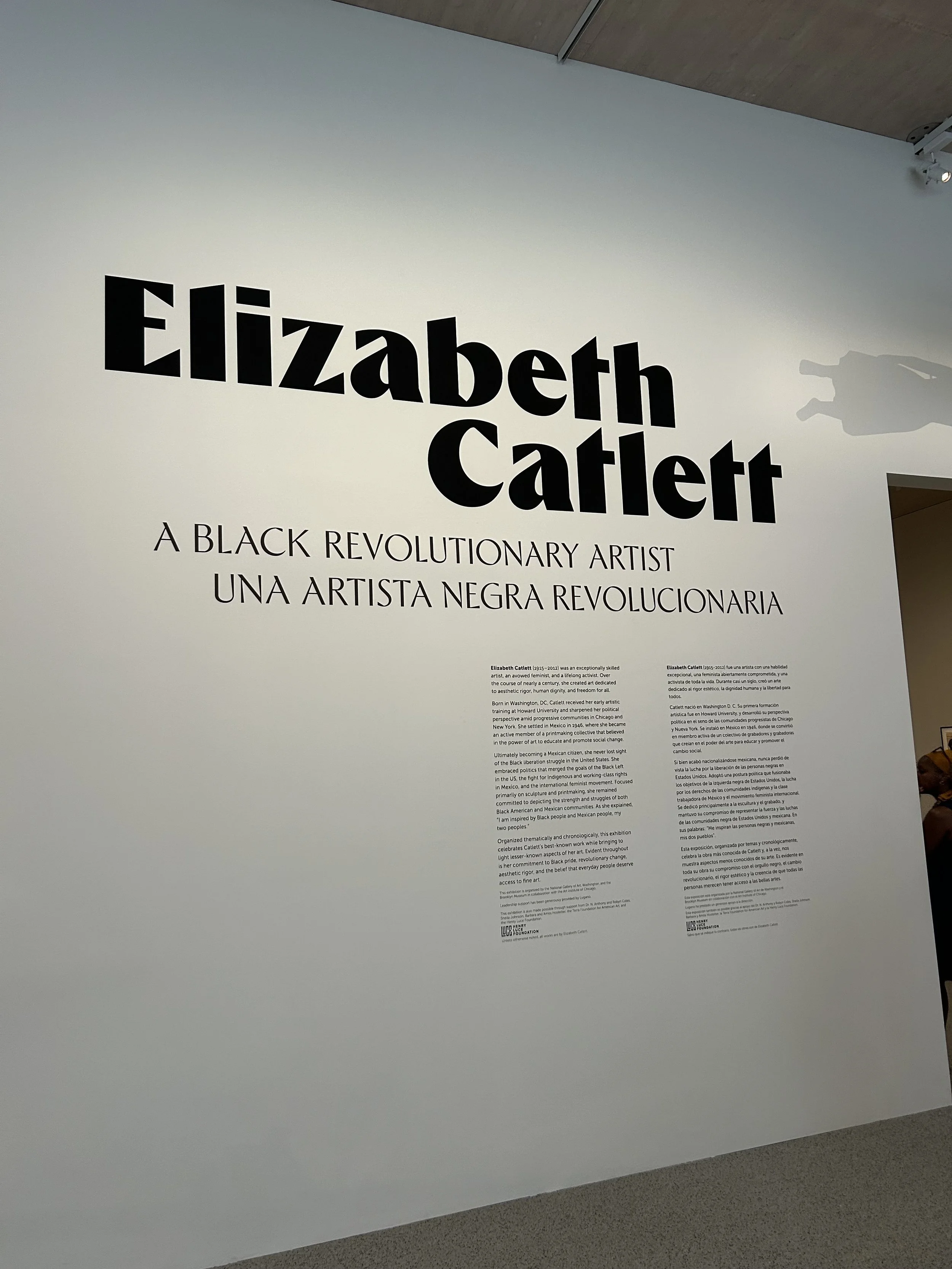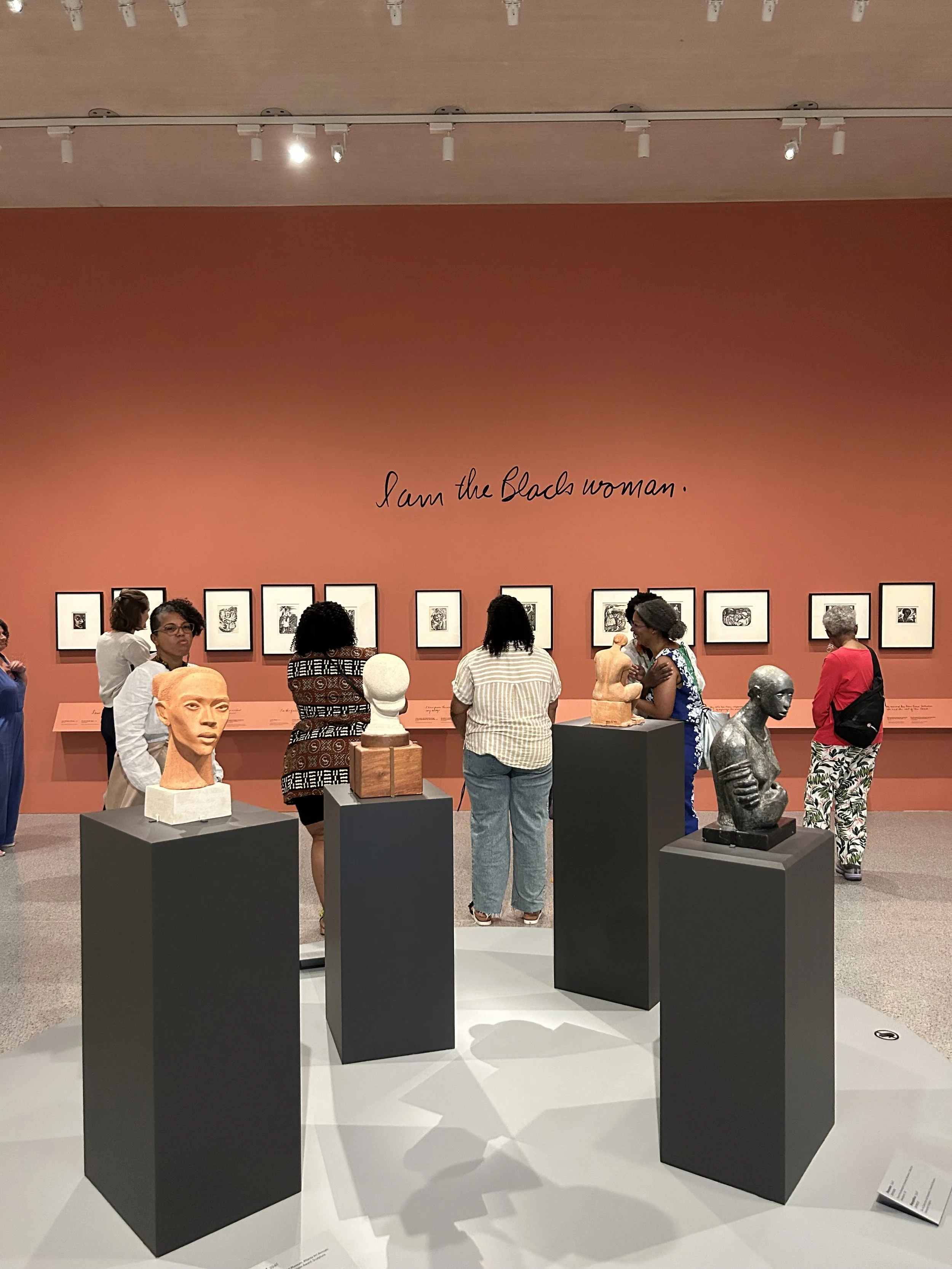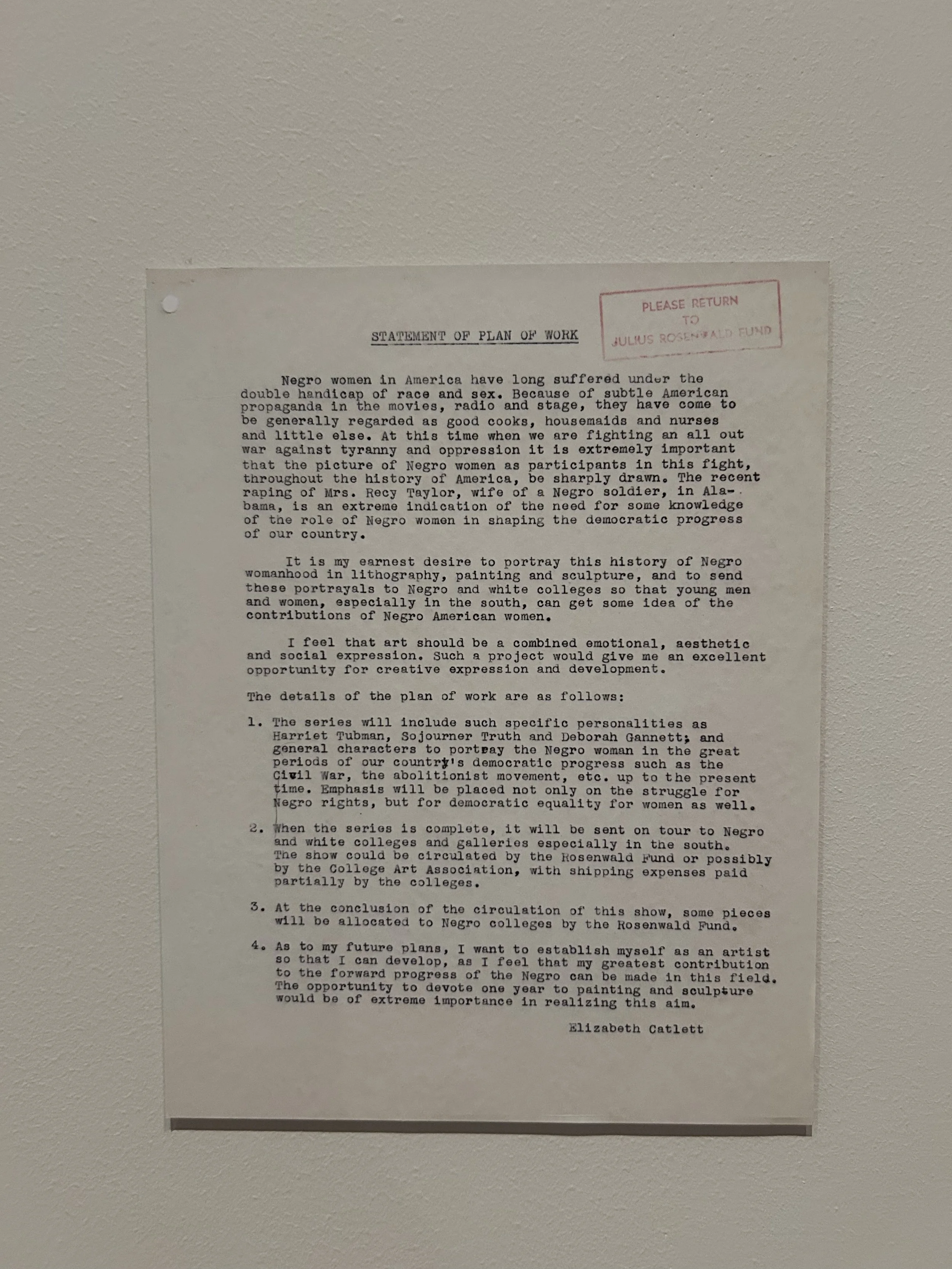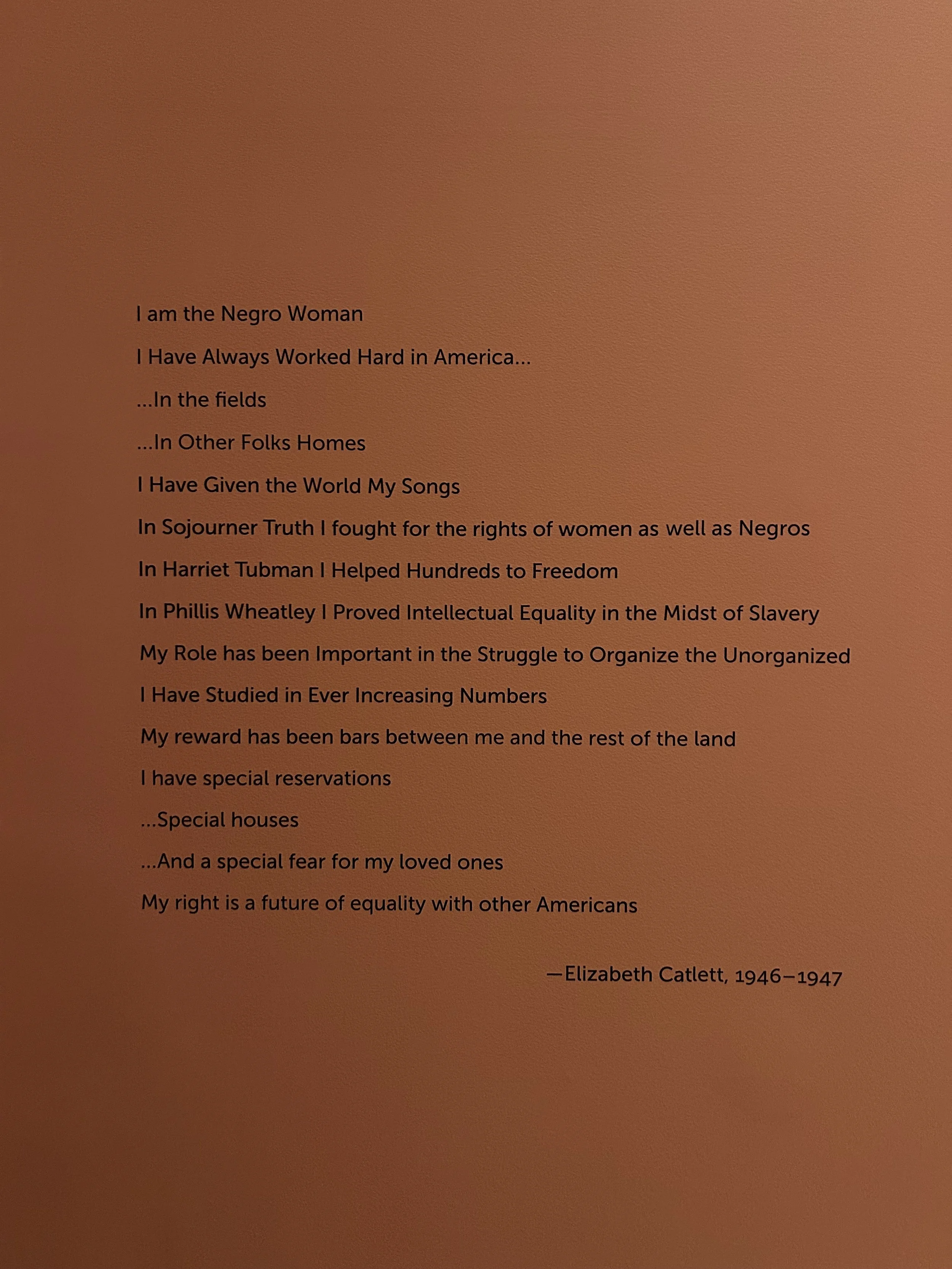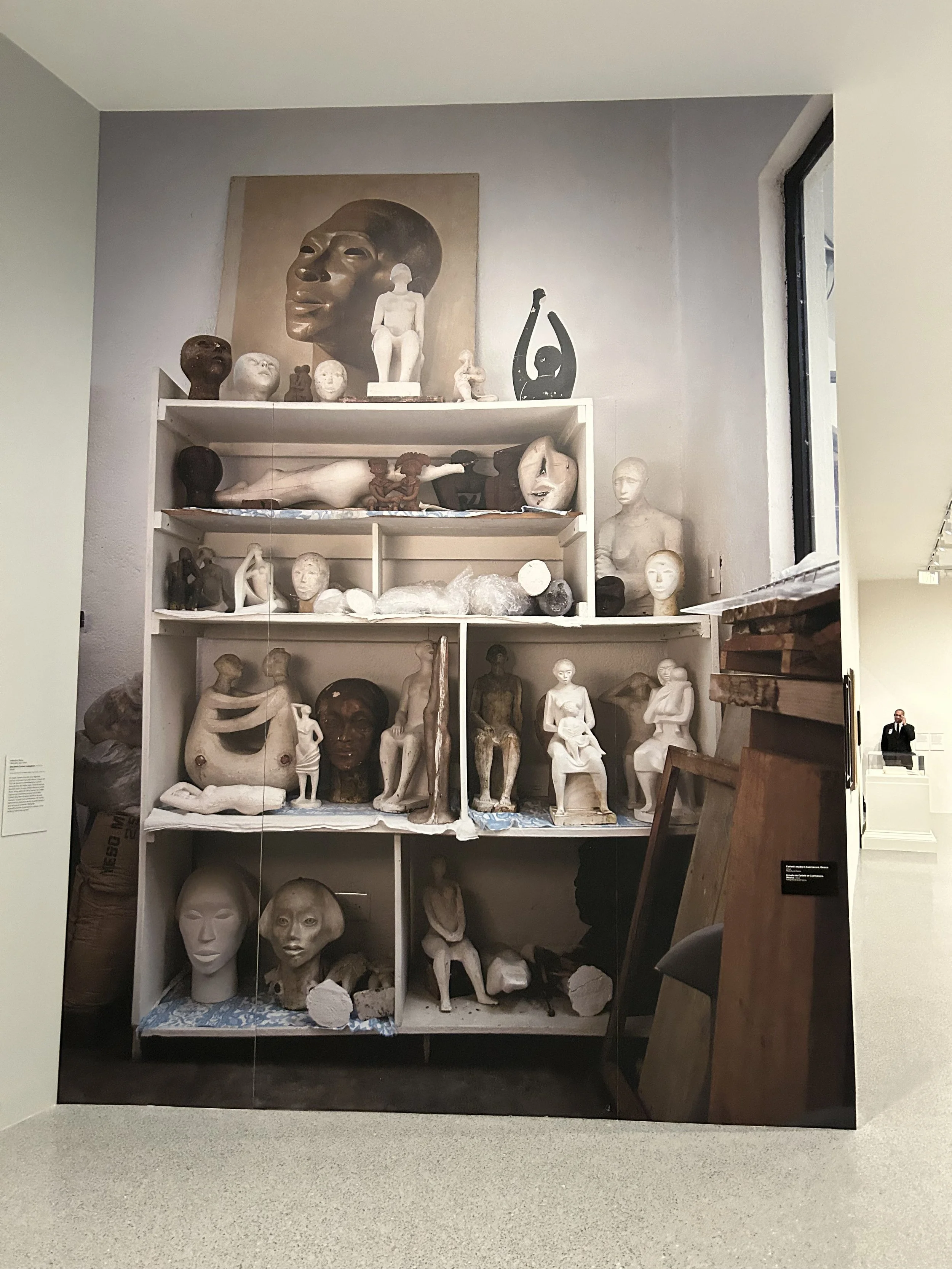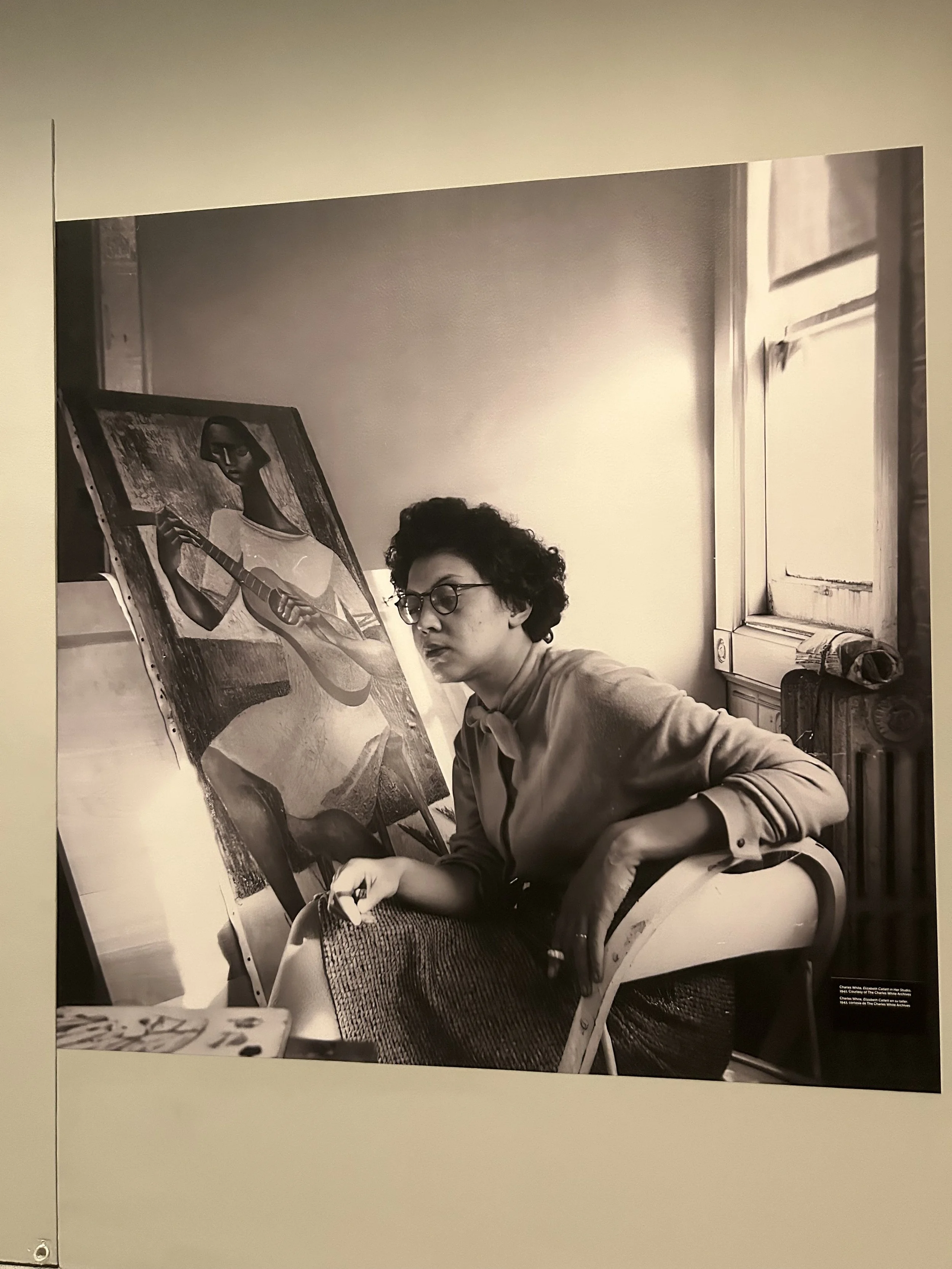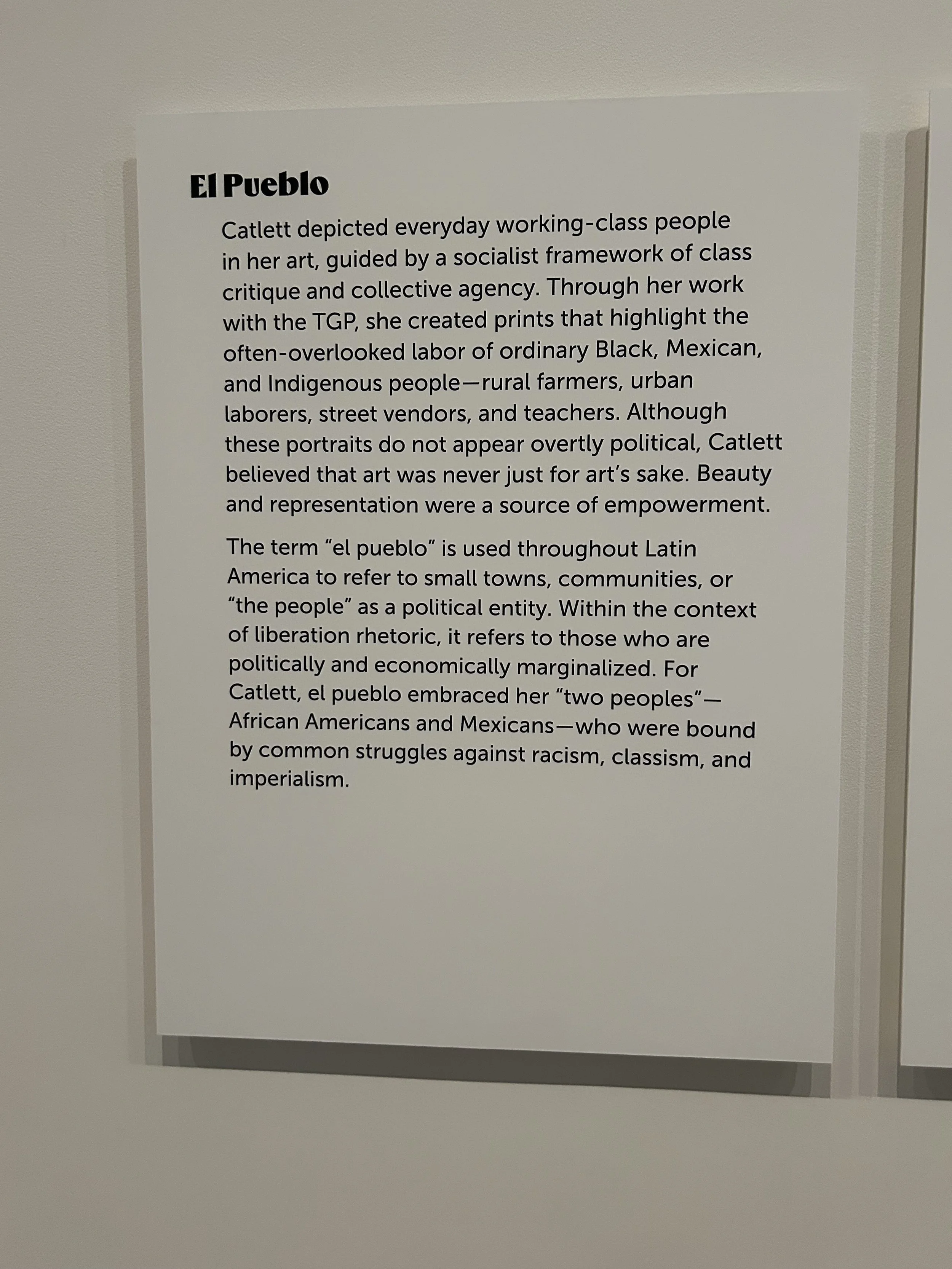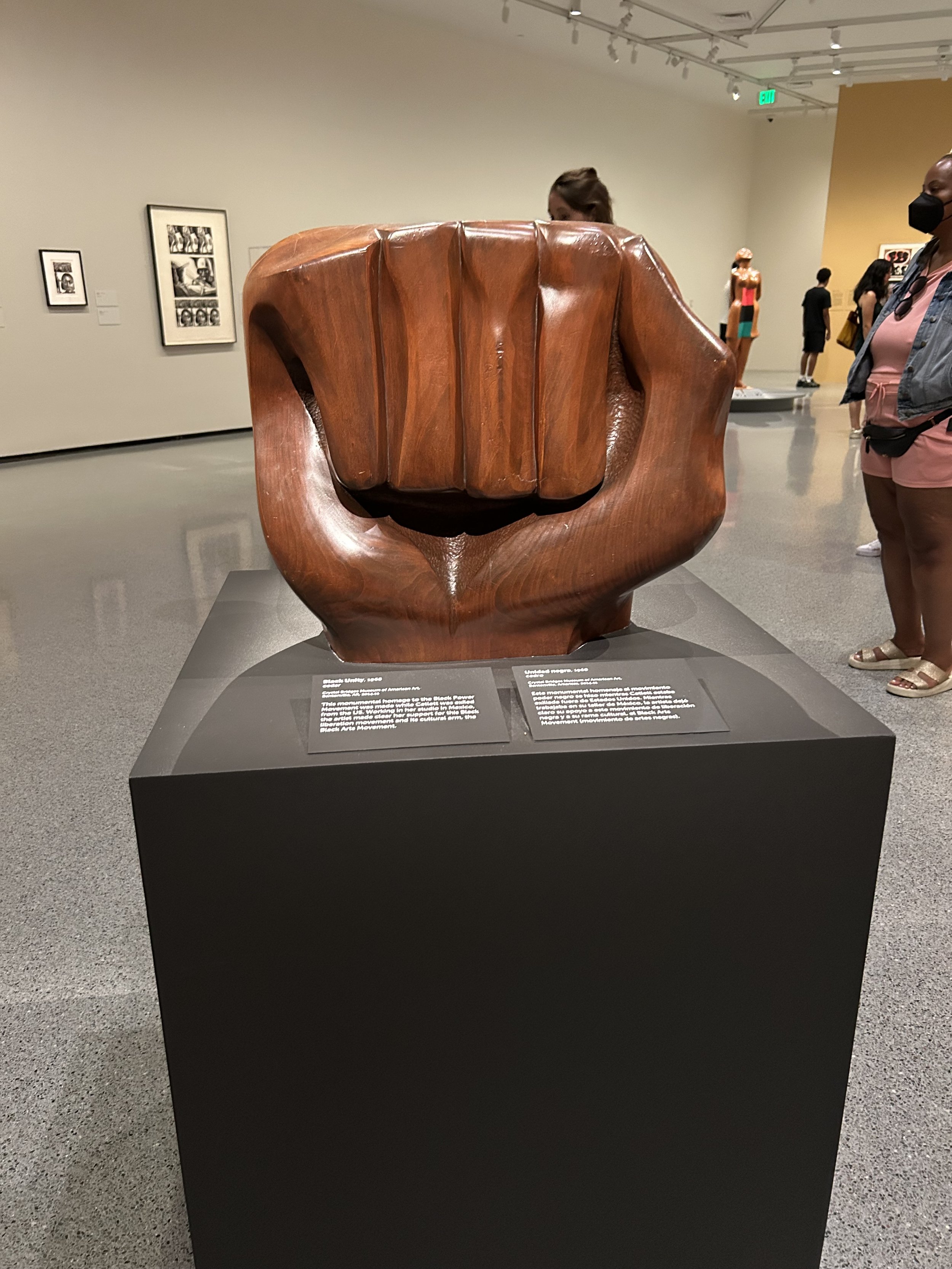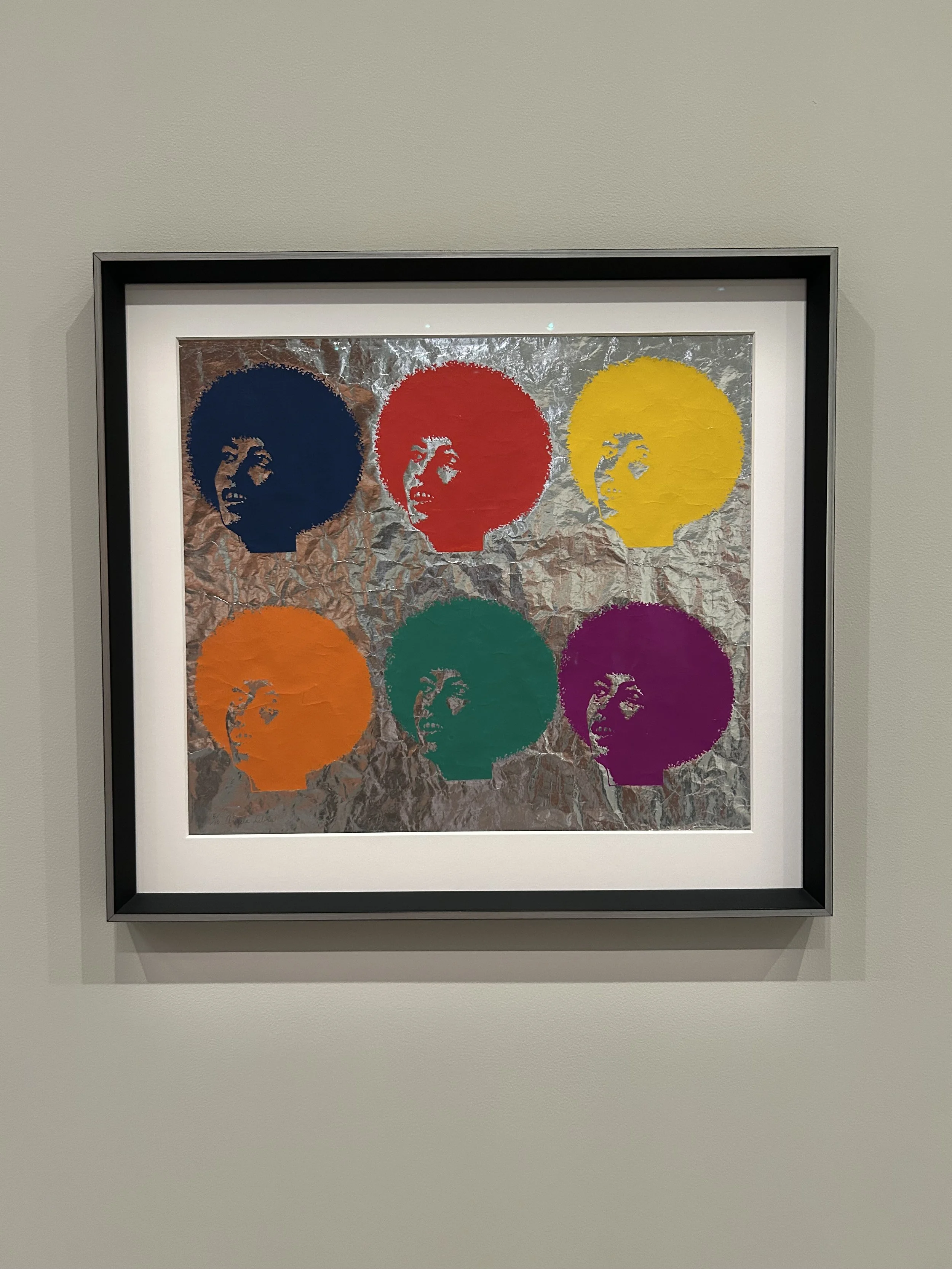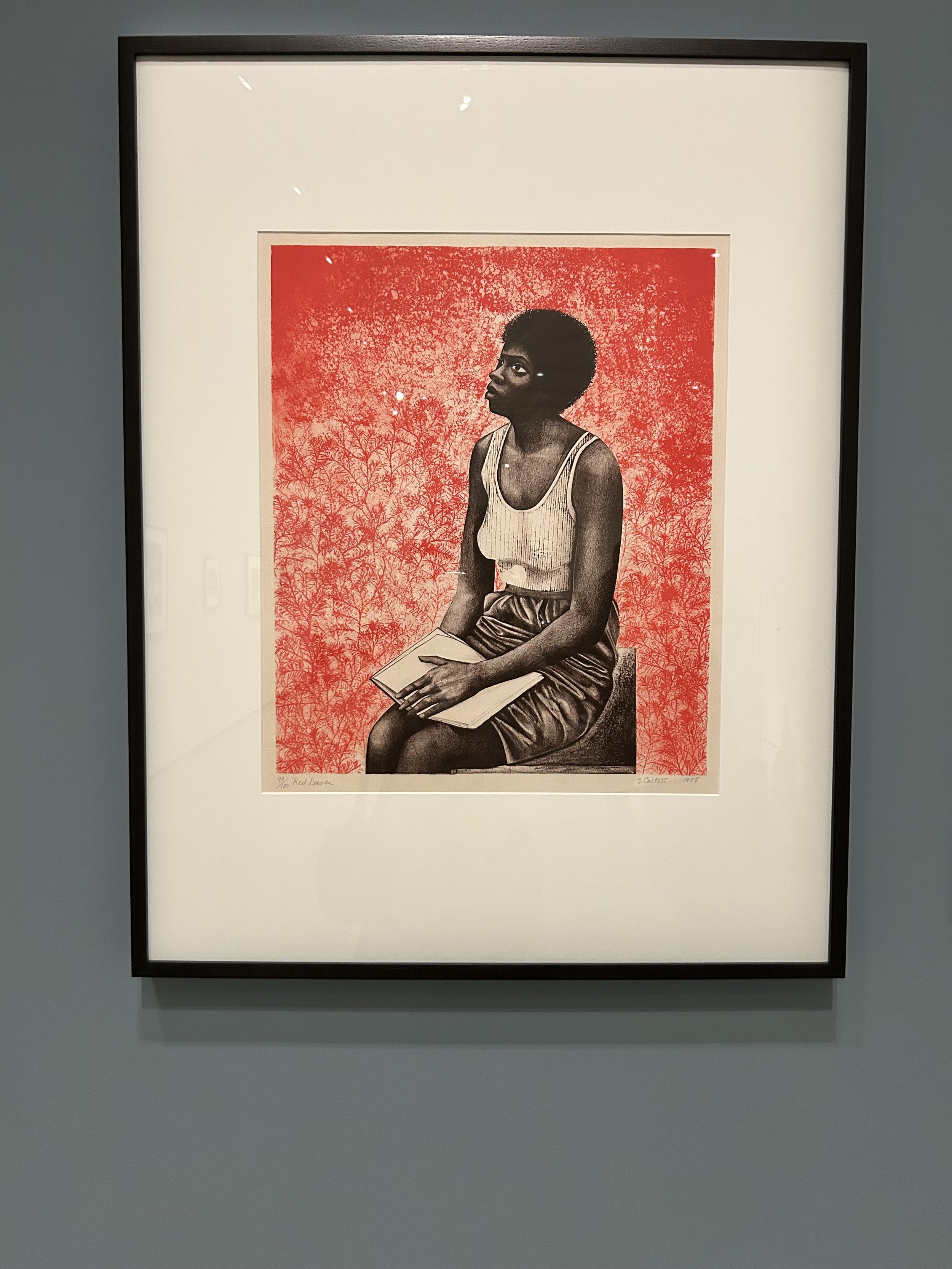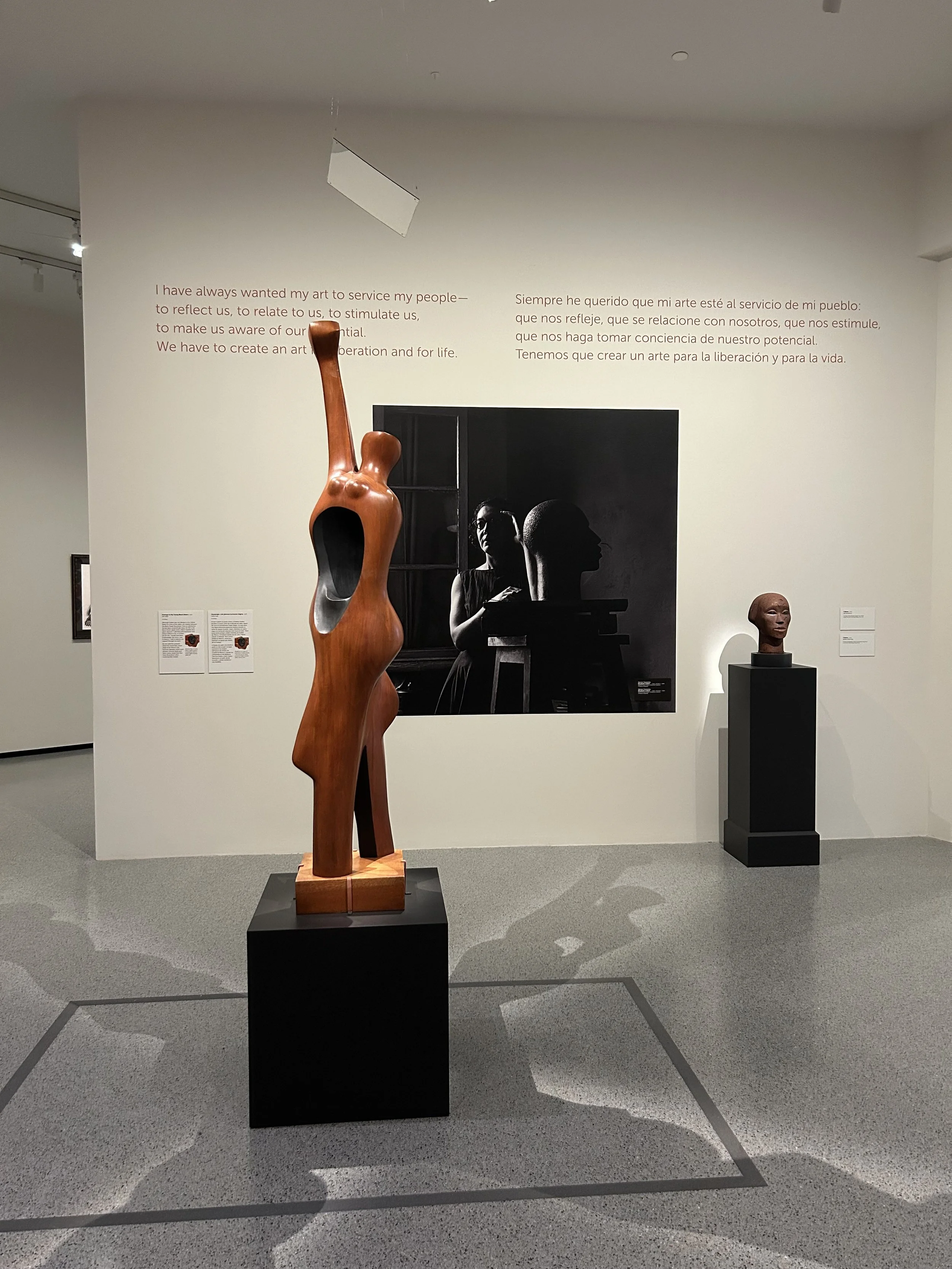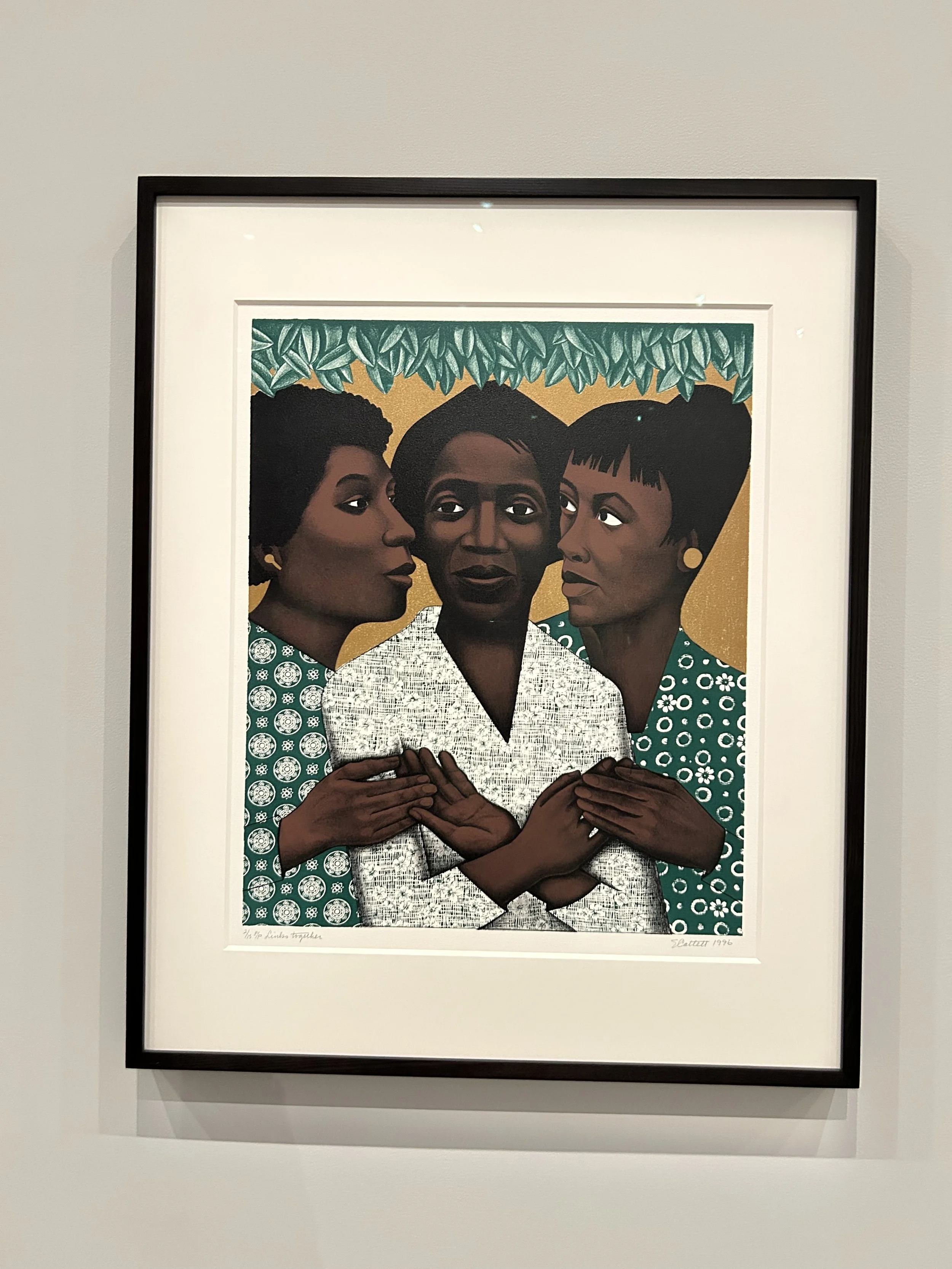Seen and Shaped
A Day Trip to the National Gallery of Art, Elizabeth Catlett: A Black Revolutionary Artist
Elizabeth Catlett: A Revolutionary Black Artist, National Gallery of Art
One of my favorite pastimes is going to museums, especially exhibitions that center Black artists. So when I was invited on a private tour of Elizabeth Catlett: A Black Revolutionary Artist at the National Gallery of Art, I immediately said yes.
Before we began, the tour guide paused and asked us:
“You all chose art today, what do you, or would you like to, get from this exhibit and this time?”
The exhibit moved me deeply. So much so that after the tour, I had to circle back and sit with it all. Something in her work resonated loud, layered, unapologetic. As someone who’s always loved art, I was struck by how Elizabeth Catlett was not only an artistic force but a woman grounded in her identity, activism, and craft.
Catlett was incredibly versatile, working boldly in sculpture, printmaking, and graphic art. She channeled the strength and struggle of Black women through every medium she touched.
What many don’t know is that Elizabeth Catlett has roots here in the DMV. She attended Howard University, where she studied painting and design, and had her very first solo show in Washington, D.C. She then moved to the Midwest to attend the University of Iowa, where she became the first African American woman to earn an MFA in sculpture. Her professor, the famed Grant Wood (known for American Gothic), didn’t even hold that degree himself.
It was Wood who encouraged her to “create what she knows.” And what she knew what we all know is the life of the Black woman. Our joys, our pain, our strength, our resistance. “I am the Black woman,” she once said, and in many ways, we all are. Her work documented that shared experience, one shaped not only by race, but by gender. She rejected the narrow ways Black women were often portrayed maids, nurses, cooks and instead elevated our image through pieces that honored our resilience, beauty, intellect, and power.
Catlett was also a revolutionary in more ways than one. In the 1940s, she moved to Mexico, partly to escape racial discrimination in the U.S., and partly to align herself with a community of leftist artists who shared her political values. She became a citizen of Mexico, entering into a self-imposed exile of sorts. During the Civil Rights Movement, she was denied re-entry into the U.S. because of her activism but that didn’t stop her. She kept creating. She even became a professor of social justice, teaching and mentoring the next generation of artist-activists.
During her years in Mexico, she married fellow artist Francisco Mora. Together, they had three children. I found it beautiful to learn how her creative rhythm shifted during motherhood. With young kids at home, she transitioned from sculpture to painting and printmaking mediums that were more manageable and less messy. But when her youngest son started kindergarten, she picked her chisels back up and returned to sculpture with renewed passion.
Her career lasted over six decades. Sixty years of creating, evolving, and resisting.
One of the most touching moments of the tour was learning about her deep love for plants. Her garden in Mexico was her sanctuary, a lush, grounding space filled with life. That detail added a sacred softness to her story: she wasn’t just a revolutionary, she was also a woman of deep care, rootedness, and renewal.
Visiting this exhibit felt like sitting at the feet of an elder. I left feeling seen. Affirmed. And reminded that artistry is power and that our stories deserve to be sculpted, printed, painted, and shared.
So, let me return to that question the guide asked at the beginning:
You chose art today, what did you receive from this time?
If you're in the D.C. area, do yourself a favor and go see Elizabeth Catlett: A Black Revolutionary Artist. It’s more than an exhibit, it’s a testimony of purpose, power, and love.
✨ Quick Tips for Visiting:
📍 Where: National Gallery of Art, Washington, D.C. until July 6th
🕰️ How Long to Spend: Give yourself at least 90 minutes.
📸 What to Bring: An open heart, a journal, and your phone (you’ll want to remember everything).
Written by yours truly: Courtney “Coco” Williams 💋


